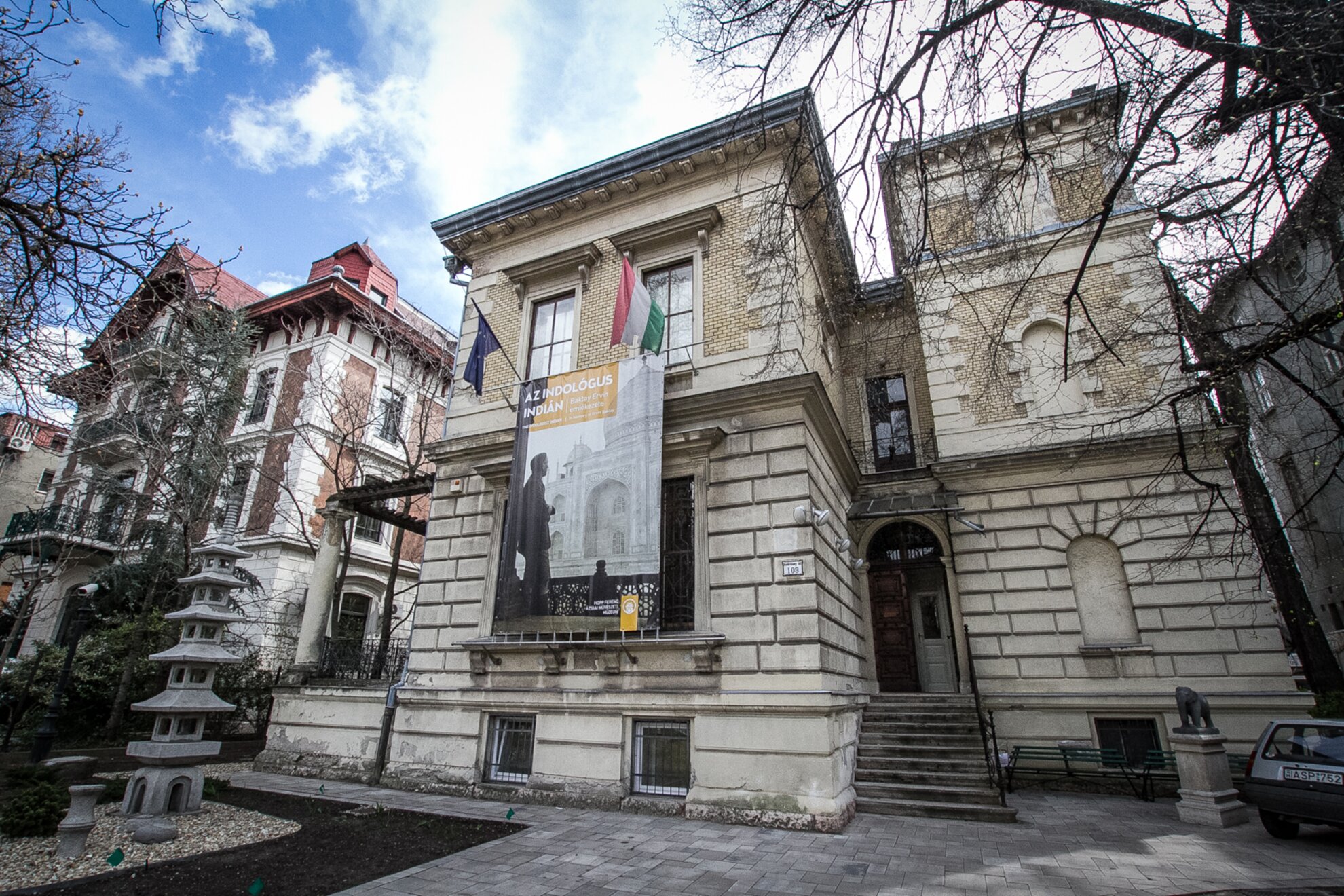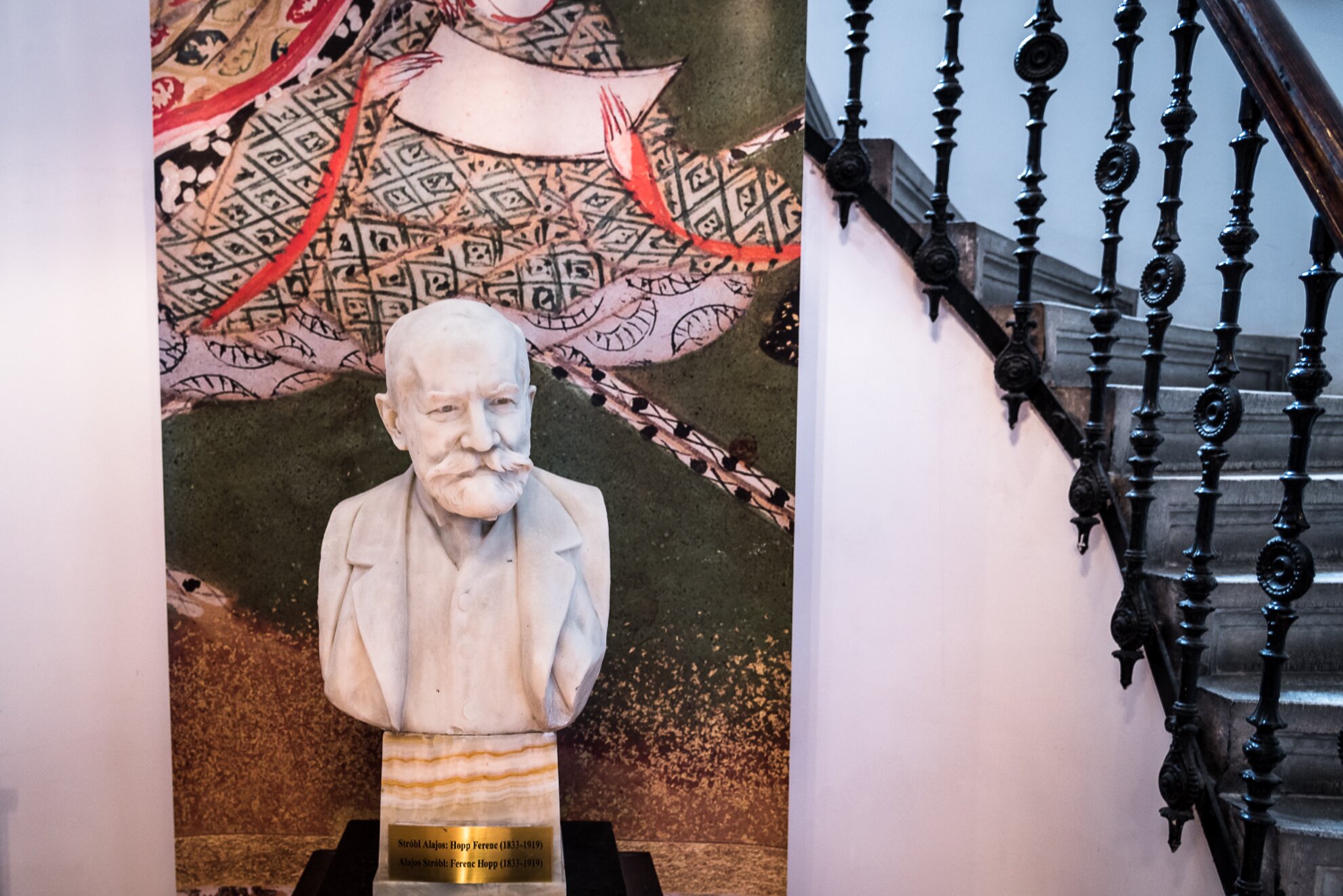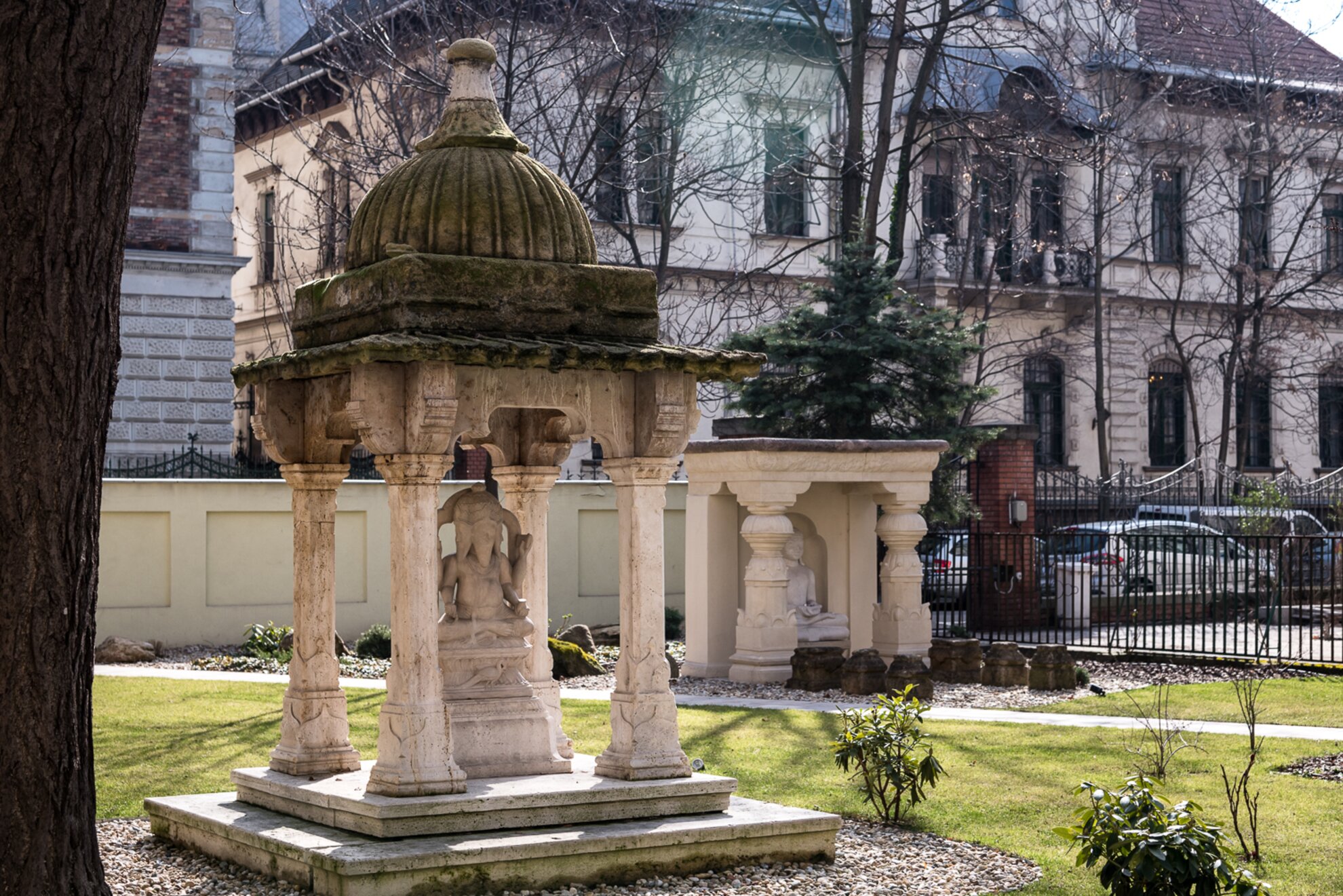Ferenc Hopp was born in Moravia in 1833 and came to Budapest as a teenager during the 1848 War of Independence to look for work. He began an apprenticeship as an optician at the Pest workshop of Master Calderoni whose wife also came from Fulnek, Moravia.
The talented boy proved to be an excellent pupil, also visiting New York, where he expanded his knowledge over four years. When he returned home, he became Calderoni’s partner, then took over the fast-growing company and became its owner.

As for his career as an optician, he did a lot to distribute demonstration tools around Hungarian schools, and he was also good with cameras. The great Asian researcher, Aurél Stein, bought the cameras and measuring instruments needed for his expeditions in Hopp’s shop.
He enriched the company and his own wealth with his acute entrepreneurial savvy, so in the second half of his life, after the age of 50, he was able to afford to travel in an enviable fashion.

From Pole to Pole
“Outside the Polar regions, there is hardly a cultivated part of the globe that this venerable gentleman would not have graced. He travelled from Nordkapp in northern Norway to the southern tip of New Zealand, from Winnipeg in Canada to Vladivostok in Siberia, and from the Strait of Magellan in southern South America to the La Pérouse Strait in northern Japan. He crossed the highest reached of the Andean cordillera from Chile to the Argentine pampas, and climbed the four-thousand-foot-high Signal Peak in Arizona by mule. He trekked by camel between Medina and Jeddah and by elephant in the railway-free regions of India and Burma,” details fellow traveller Dr Ferenc Gáspár in Uj Idők in 1913, on the occasion of Ferenc Hopp's 80th birthday.

Hopp even embarked on one journey after his 80th birthday, supposedly cheerfully proving that a trip around the world will be especially good for a person of his age and expected to prolong his life. Though he was no beefcake, he was warmed by his inner convictions.
He who dares
Ferenc Gáspár also added in his birthday greeting that, “You would think that only a person made of steel could undertake these tiring and in some places daring journeys. Well, that’s not the case, because, with all my boundless respect and sympathy, I must honestly state that Hopp, in terms of build, could not be a Prussian captain of the guards or even an Austro-Hungarian drum major. But soul is the steel – his knowledge is colossal and his perseverance is simply amazing. And besides, he’s bold and reckless, like a cowboy of the prairies or a research scientist dealing in dangerous areas”.

Ferenc Hopp returned to America, toured northern Europe and West Africa, and went to India, Java, China and Japan on his first trip around the world. He considered Japan to be the most beautiful country in East Asia and its art to be the most beautiful in the entire Far East.
Although he did not study science or art history, he had a good eye and took advantage of his sensitivity to the works of applied art with great dexterity during his travels
An eye for beauty
“He collects what he likes, what directly affects him. He doesn’t care if the object he owns is old or new – it is important that it is beautiful in his eyes and not lack the qualities for which his vocation has especially developed an insight and receptivity,” writes Zoltán Takács Felvinczi in 1914, a renowned art historian and Orientalist, and later the first director of the Hopp Museum.

The spirit of independence
“Ferenc Hopp is a true independent gentleman. His is not the force that exploits others and leans towards any political group or those of economic interest, but a real-life artist untouched by the disturbing waves of daily life. Unusual virtues have led him to a height where only an exceptional spiritual being can live alone, shifted by his own strength. Such a phenomenon is rare in our poor Hungary (‘poor’ in the most drastic sense of the word) and therefore he merits special attention” – Zoltán Takács Felvinczi.
According to his description, Hopp was a true self-made man whose thinking became American. "In America, people create wealth to give away everything in the end," Hopp told Felvinczi at their first meeting.
During his travels, he first collected souvenirs for his friends, then towards the end, was bringing them home in crates to pile them high in his villa at Andrássy út 103.

The Buitenzorg Villa later became the building of the Ferenc Hopp Museum of Asiatic Arts, in whose you can still see the sculptures, pagodas and memorial columns that Hopp erected at that time, making it a local curiosity. His collection of many thousands of objects came from Asia, Africa, America and Australia, most notably from the Far East, China and Japan.
Ferenc Hopp was
already aware during the trip that he was not accumulating exceptional works of
art for himself. For a long time, he had planned to donate it to the Museum of
Fine Arts, Applied Arts and Ethnography, but he finally left his collection of
4,100 pieces to the Hungarian State, as did his villa.
In his will, he
stipulated that additional Eastern collections owned by the state be added to
his.

From this, the
Ferenc Hopp Museum of Asiatic Arts was established in 1923, which then expanded
with donations, purchases and the arrival of Oriental items from other museums,
including Jenő Zichy's collections from northern Asia and Imré Schwaiger’s from
India.
Today, it consists of about 30,000 works of art and covers artefacts
from China, Japan, India, South-East Asia, Nepal, Tibet, Mongolia, Korea and
the Middle East.
Ferenc Hopp Museum of Asiatic Arts
District VI. Andrássy út 103




